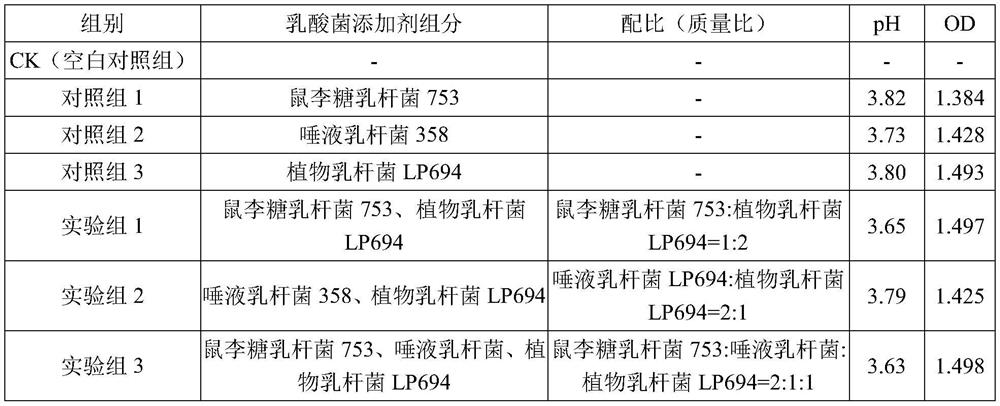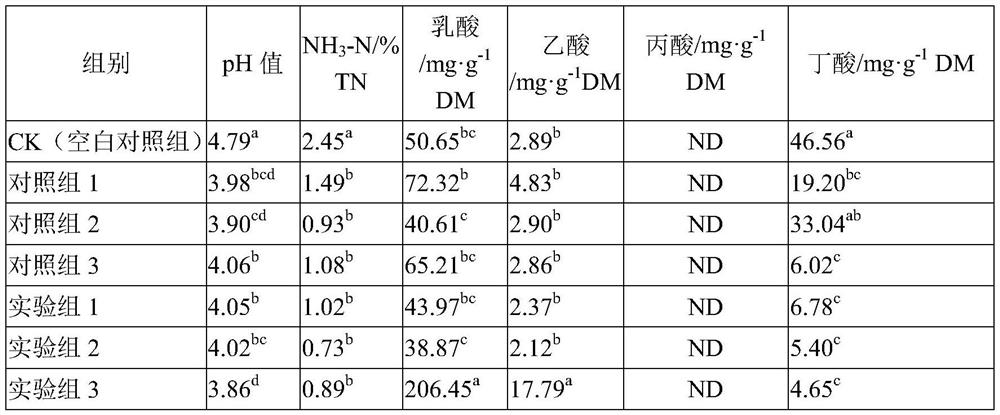Hemarthria herbage silage lactobacillus additive and preparation method thereof
A technology of lactic acid bacteria and bullbena, applied in the field of microorganisms, can solve problems such as the ineffectiveness of bullbena forage silage, and achieve the effects of improving sensory quality, fast growth rate and improving quality
- Summary
- Abstract
- Description
- Claims
- Application Information
AI Technical Summary
Problems solved by technology
Method used
Image
Examples
Embodiment 1
[0034] The preparation of verbena silage lactic acid bacteria additive, concrete steps are as follows:
[0035] 1) Take "Ya'an" Verbena genus forage samples, add sterile distilled water, and dilute to 10 -1 , 10 -3 and 1 0-5 Sample dilutions of three dilutions; draw sample dilutions and apply to MRS solid medium for culture, and subculture twice continuously to obtain purified colonies;
[0036] 2) After culturing the purified colony obtained in step 1) on a lactic acid bacteria solid medium at 37° C. under constant temperature and anaerobic conditions for 24 hours, carry out the identification of lactic acid bacteria by Gram staining and catalase contact reaction, and the identified lactic acid bacteria Adding it to a liquid nutrient medium containing sterilized glycerol and storing it at -80°C to obtain isolated and purified lactic acid bacteria;
[0037] 3) After activating the isolated and purified lactic acid bacteria obtained in step 2), inoculate 10 ml of MRS liquid ...
Embodiment 2
[0048] Lactic acid bacteria additive as verbena silage additive
[0049] The lactic acid bacteria additives of the experimental group 1-3 shown in Table 3 and the bacterial liquid of the control group 1-3 were respectively inoculated into the MRS liquid medium according to the inoculum amount, and sterilized distilled water was used as a blank control to obtain a bacterial strain additive solution, and the bacterial strain live The number of bacteria is set at 1×10 6 CFU / g FW;
[0050] Take "Ya'an" Verbena flat spike samples, cut into about 20mm in length, and obtain fresh samples. Each group shown in Table 2 takes 500g of fresh samples and puts them into plastic bags (25×35cm; Aodeju, China);
[0051] Spray the added solution of the strains shown in Table 3 evenly into the pasture sample, mix evenly, pack silage in a bag, vacuum seal it, leave it at room temperature (27-37° C.) and ferment it for 60 days, then unpack it to obtain a silage sample.
[0052] Sensory evaluation...
PUM
 Login to View More
Login to View More Abstract
Description
Claims
Application Information
 Login to View More
Login to View More - R&D
- Intellectual Property
- Life Sciences
- Materials
- Tech Scout
- Unparalleled Data Quality
- Higher Quality Content
- 60% Fewer Hallucinations
Browse by: Latest US Patents, China's latest patents, Technical Efficacy Thesaurus, Application Domain, Technology Topic, Popular Technical Reports.
© 2025 PatSnap. All rights reserved.Legal|Privacy policy|Modern Slavery Act Transparency Statement|Sitemap|About US| Contact US: help@patsnap.com



